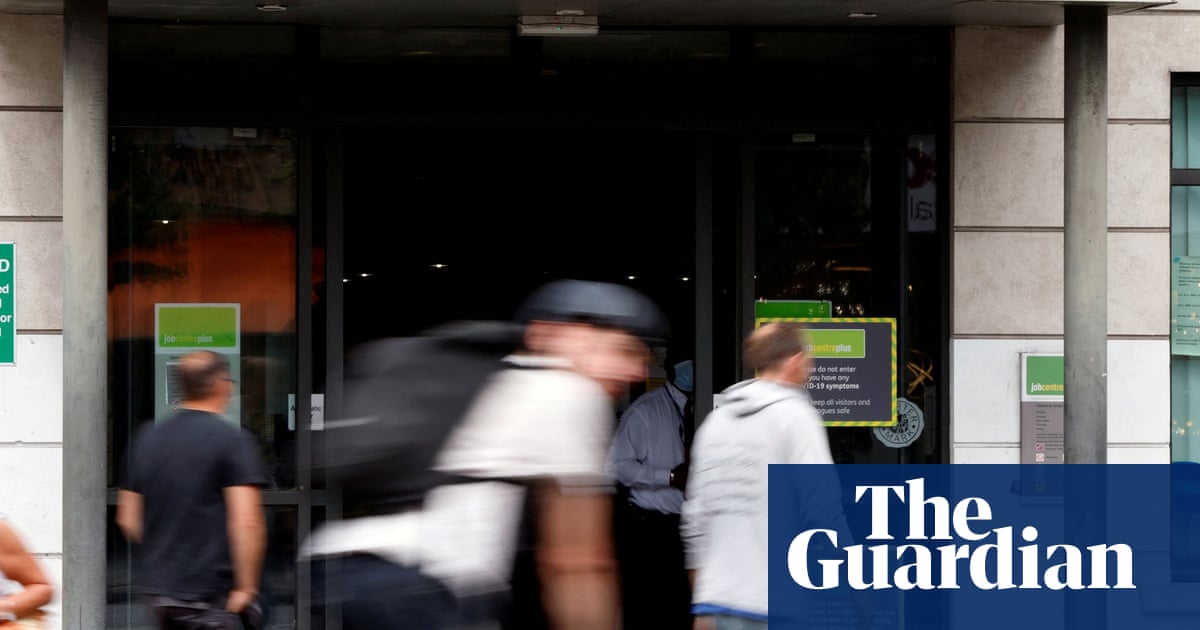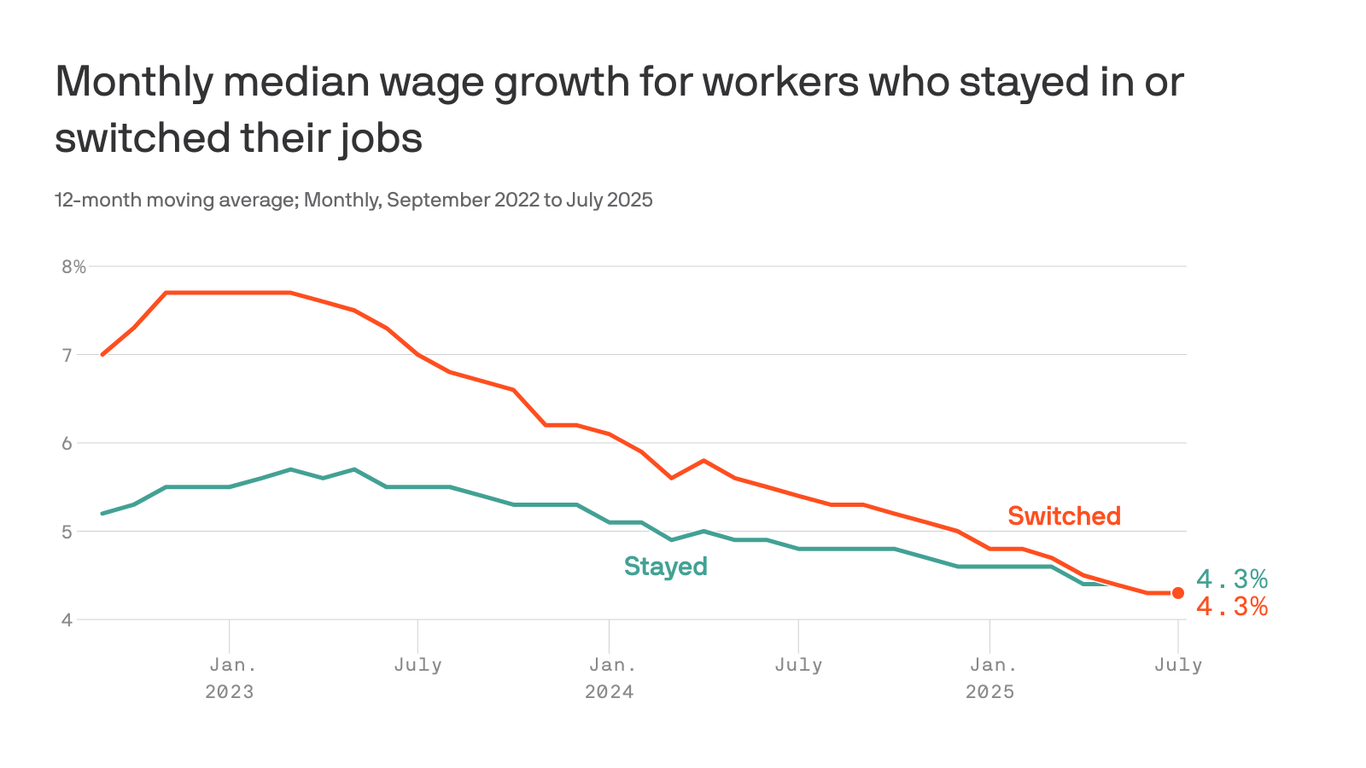#wage-growth
#wage-growth
[ follow ]
#inflation #unemployment #bank-of-england #job-market #labour-market #labor-market #uk-economy #uk-labour-market
fromwww.cbc.ca
1 week agoCanadian unemployment rate falls to 6.5% | CBC News
Canada's unemployment rate dropped to 6.5 per cent and the economy gained 54,000 jobs in November, Statistics Canada said on Friday. The jobless rate ticked down several points from October's 6.9 per cent after trending upwards for most of the year, even hitting 7.1 per cent in September. Most of the jobs added to the economy in November were part time and largely driven by employment gains among young people between the ages of 15 to 24.
Canada news
#uk-labour-market
UK news
fromLondon Business News | Londonlovesbusiness.com
7 months agoUK jobs market is struggling - and US tariffs are going to make it worse - London Business News | Londonlovesbusiness.com
UK labour market shows signs of decline as job vacancies drop below pre-pandemic levels despite strong wage growth.
UK news
fromLondon Business News | Londonlovesbusiness.com
4 weeks agoHiring falls back further ahead of Reeves Budget - London Business News | Londonlovesbusiness.com
London's labour market showed tentative stabilisation in October with reduced permanent placements, milder temp billings contraction, increased candidate supply, and softer pay growth.
fromFortune
1 month agoThe K-shaped economy has come for your wages, as lower-income Americans sees their gains plummet to the weakest rate in a decade | Fortune
A decade ago, low-income workers saw wages grow at the highest rate of any Americans. Now, the opposite is true, and the gap is widening between how quickly wages increase for wealthy and poorer U.S. households. In a Monday blog post titled "K-shaped economy," Apollo chief economist Torsten Slok warned the growing disparity is yet another sign of today's economy continuing to serve the rich, while poor Americans continue to struggle.
US news
fromLondon Business News | Londonlovesbusiness.com
1 month agoVacancies hit lowest level as employers wait for Budget next month - London Business News | Londonlovesbusiness.com
The UK jobs market showed further signs of cooling in September as advertised vacancies dropped -2.4% month-on-month to 826,205 jobs, echoing ONS data that highlights a 39th consecutive period of vacancy decline, according to the latest UK Job Market Report by job matching platform Adzuna. This means open roles are now -4.1% lower than a year ago, and alarmingly, September records the lowest vacancy level this year, suggesting employers are continuing to scale back hiring plans after a strong start to the year.
UK news
UK politics
fromLondon Business News | Londonlovesbusiness.com
1 month agoPressure mounts on Reeves ahead of the Autumn Budget - London Business News | Londonlovesbusiness.com
A softening labour market with rising unemployment and cooling wage growth weakens hiring, especially for young workers, and complicates fiscal policy.
UK news
fromLondon Business News | Londonlovesbusiness.com
2 months agoLondon workers show cautious optimism despite cracks in the jobs market - London Business News | Londonlovesbusiness.com
London workers show resilience and confidence in their skills despite perceptions of a worsening, highly competitive labour market and mixed employment and wage changes.
fromAxios
2 months agoMarion County worker wages increase
By the numbers: Marion County's paycheck increase brought Indy's average weekly wages to $1,779, or around $137 more a week than last year's average pay, per BLS' preliminary numbers. In Hamilton County, average weekly wages rose 2.6%, or around $38, to $1,476. Hendricks County wages rose 2.2%, or around $35, to $1,083. Caveat: The data tracks where people earn their money, not where they live.
Business
fromLondon Business News | Londonlovesbusiness.com
2 months agoBank of England keeps rates on hold as inflation proves sticky - London Business News | Londonlovesbusiness.com
In a move that comes as no surprise, the Bank of England's Monetary Policy Committee (MPC) has voted to keep interest rates unchanged at 4%. The decision reflects the MPC's concern that inflation, which held steady at 3.8% in August, remains too far above the 2% target to justify an early easing. Persistent wage growth and services inflation are the key reasons for this cautious stance, with underlying price pressures proving slow to unwind.
UK news
fromFortune
3 months agoADP says job growth was 'whipsawed' in August, with rare warning on AI and consumer jitters
"The year started with strong job growth, but that momentum has been whipsawed by uncertainty," Nela Richardson, ADP's chief economist, said in the press release.She cited a mix of factors that are weighing on hiring decisions, "including labor shortages, skittish consumers, and AI disruptions."ADP's August report is among the first to namecheck AI disruptions, a rare admission that artificial intelligence is now beginning to reshape hiring sentiment.
Business
#california
Silicon Valley real estate
fromThe Mercury News
6 months agoWhere are Californians getting the biggest pay raises?
California's wage growth varies significantly with certain counties experiencing much higher pay hikes, notably in the Bay Area.
Economic conditions show a disparity in wage increases across California counties, influenced by the tech sector's dynamics.
[ Load more ]

































